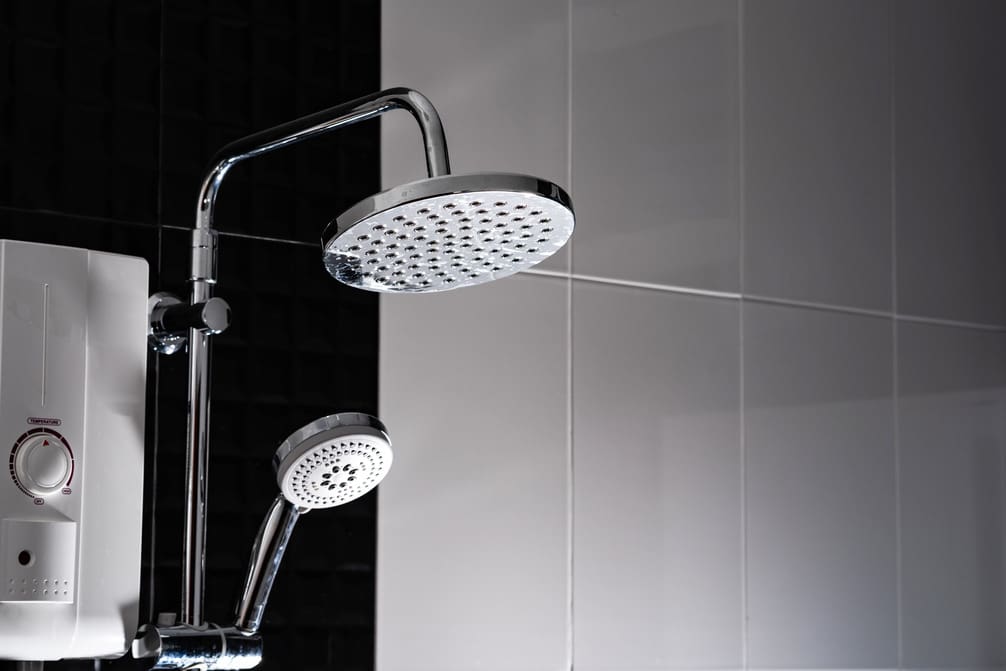Just like a car needs its oil changed to keep running smoothly, your shower head requires regular checks and replacements to maintain its best performance.
You might not think about it often, but the longevity of your shower head can be influenced by several factors, including how well you maintain it, the quality of your water, and how frequently it’s used.
Signs that it’s time for a change can range from the obvious, like leaks and reduced water pressure, to the more insidious, such as the growth of black mold or sediment buildup.
While the general recommendation is to replace your shower head every 6 to 8 months, this timeline can vary based on your specific circumstances.
Key Takeaways
- Regular shower head replacement every 6 to 8 months is important for optimal performance.
- Signs of wear and tear or declining performance indicate the need for replacement.
- Shower head lifespan is influenced by factors such as quality, maintenance, and water quality.
- Prompt replacement ensures cleanliness, health, and environmental benefits.
Identifying Shower Head Lifespan
Understanding the lifespan of your showerhead is crucial in maintaining optimal bathroom functionality and hygiene. Identifying shower head lifespan involves being aware of several factors, including the quality of shower heads, how well you maintain them, their frequency of use, the quality of water running through them, and their installation method. These elements directly influence when it’s time to replace your shower.
Shower heads should be replaced every few years, but the exact time can vary based on the signs that indicate wear and tear. Look out for leaks, decreased water pressure, the growth of black mold, sediment accumulation, and general malfunctioning. These are clear indicators that it’s time to replace your shower. Specifically, the presence of mold is a health concern and should prompt immediate action.
To ensure the longevity of your shower heads, regular maintenance is key. This includes cleaning to prevent mold and sediment buildup. Using vinegar is an effective method for removing these unwanted elements. By staying vigilant and addressing issues promptly, you can extend the lifespan of your shower heads and maintain a clean, functional bathroom.
Recognizing Wear and Tear Signs
Having discussed the importance of identifying your shower head’s lifespan, let’s now focus on how you can recognize the signs of wear and tear. It’s crucial to keep an eye out for these indicators, as they not only affect the water flow but can also pose health risks.
Here are four key signs that it’s time to replace your shower head:
- Black Mold and Little Black Spots: If you notice black mold or little black spots on your shower head, it’s a clear sign of mold and bacteria buildup. This not only indicates wear but also poses a health hazard.
- Hard Water Stains: Persistent hard water stains that don’t come off with regular cleaning are a tell-tale sign. These stains indicate that your shower head is struggling to handle the minerals in your water.
- Sediment Buildup: A visible buildup of sediment or a noticeable decrease in water pressure can suggest that your shower head is clogged and not functioning efficiently.
- Wear and Tear Signs: Any visible cracks, leaks, or parts of the shower head coming loose are immediate indicators that it’s time to replace the shower head.
Regularly inspecting your shower head for these signs can help ensure that your bathroom remains a clean and healthy space.
Understanding Water Pressure Changes
Water pressure fluctuations in your shower can stem from an aging shower head or underlying plumbing issues, requiring prompt attention. When you notice changes in your shower’s water pressure, it’s crucial to investigate.
A common cause of decreased water pressure is sediment buildup within the shower head. This accumulation can block water flow, making it seem like your water supply isn’t as strong as it used to be.
Sudden drops in water pressure might signal a failing shower head. It’s one of the clear signs that it’s time to consider installing a new shower head. However, before you make a purchase, try tightening the connection between the hose and the shower head. This simple step can sometimes resolve low water pressure issues without the need for a replacement.
If these measures don’t restore your shower’s water pressure, it may be time to seek professional help. A plumber can accurately diagnose whether the issue lies with your shower head or if there are more significant problems with your home’s water supply.
Addressing these changes promptly ensures that your shower remains a place of relaxation and refreshment.
Health and Eco-Friendly Considerations
After addressing changes in your shower’s water pressure, it’s also essential to consider the health and eco-friendly aspects of your shower head. Keeping these factors in mind not only ensures a safer bathing experience but also contributes to environmental conservation.
Here’s why you might need to replace your current shower head with a new one, focusing on health and eco-friendly considerations:
- Minerals and Chemical Build-up: Over time, your shower head can collect minerals and chemicals present in water. This build-up can harbor harmful bacteria and black mold, posing health risks. Regular replacement or thorough cleaning helps maintain cleanliness and hygiene.
- Improved Water Flow and pH Balance: Sediment accumulation affects water flow and can alter pH levels. Replacing your shower head ensures consistent water pressure and quality, enhancing your bathing experience.
- Eco-Friendly Water Conservation: Upgrading to an eco-friendly shower head can significantly reduce water usage. This not only lowers your water bill but also minimizes your environmental footprint.
- Quality Material Choice: Metal shower heads are less prone to bacteria growth than plastic ones. Choosing a high-quality material in order to make a replacement can further promote a healthier shower environment.
Considering these points ensures you’re making an informed decision about when to replace your shower head for both health and eco-friendly reasons.
Scheduling Regular Replacement
To ensure your shower remains a safe and enjoyable space, it’s crucial to replace your shower head every 6 to 8 months. Waiting too long to replace it can lead to a host of issues, from decreased water pressure to the buildup of harmful bacteria.
Regular replacement not only maintains optimal water pressure but also ensures you’re getting the cleanest and most refreshing shower experience possible.
Replacing your shower head is a straightforward and cost-effective way to keep your bathroom in top condition. It’s a simple task that can significantly impact your daily routine, making it an essential part of bathroom maintenance.
If you’re wondering whether it’s time for a new shower head, look out for signs of wear and tear or a noticeable decline in performance. These are clear indicators that you need a new shower head.
Frequently Asked Questions
How Often Should I Replace a Shower Head?
You should replace your shower head every 6 to 8 months to keep water pressure optimal and avoid leaks, mold, and sediment buildup. Regular cleaning can extend its life, but don’t wait too long.
How Do I Know if I Need a New Shower Head?
You’ll know you need a new shower head if you spot leaks, experience decreased water pressure, see black mold, find sediment build-up, or it’s malfunctioning. Don’t wait; it’s time for an upgrade.
What Is the Life Expectancy of a Showerhead?
A showerhead’s life expectancy varies, but it’s typically several years if you maintain it well. Look out for leaks, mold, or low pressure as signs you might need to replace it sooner.
Do Shower Heads Need Replacing?
Yes, you should replace your shower head occasionally. Over time, they can develop clogs or leaks, reducing efficiency. Hiring a professional like Stahl Plumbing ensures a secure, leak-free installation for optimal performance.





